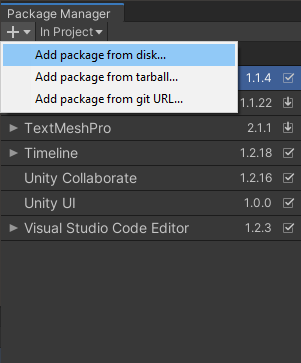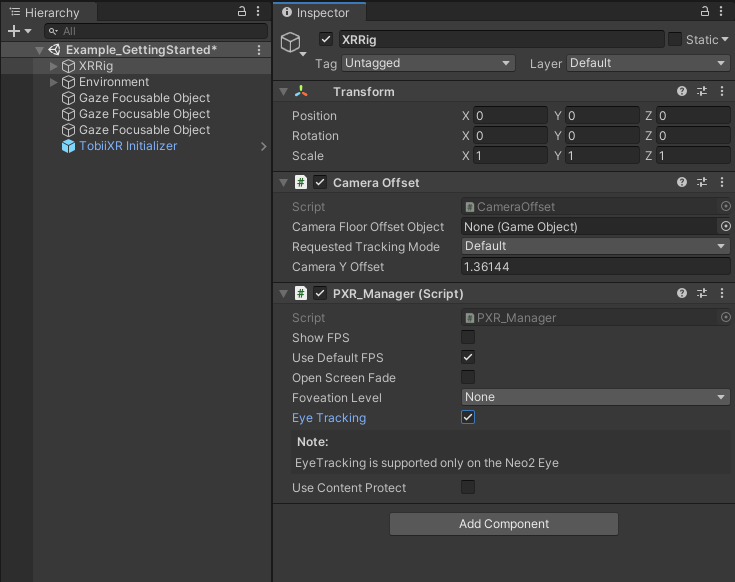Pico Neo 2 Eye Development Guide

This page will give you a step-by-step walkthrough on how to set up your Pico Neo 2 Eye and how to get started with the Tobii XR SDK.
The Pico Neo 2 Eye requires Pico’s Unity XR Platform SDK which has been removed from their website. Due to this we will phase out Tobii XR SDK and Tobii Ocumen support for this headset in the future.
For the time being, you can still contact Pico’s support and ask for the Unity XR Platform SDK in order to develop with your Pico Neo 2 Eye.
At the end of this guide, you will be able to highlight game objects by looking at them.
Table of Contents
Step 1: Set up your headset
Follow the built-in first time setup guide for your headset.
Step 2: Calibrate for your eyes
Make sure to calibrate the eye tracking using the built-in calibration.
Step 3: Import and setup Pico’s Unity XR Platform SDK
-
Contact Pico’s support via their website to get the latest Unity XR Platform SDK v1.2.5 and import it into your Unity project.
-
Follow Pico’s Getting Started instructions.
Before going further, make sure Pico’s Unity XR Platform SDK works, you have selected Android as the target platform, enabled VR support using the XR Plugin Management and can build.
You should now be able to access live eye tracking data via Pico’s Unity XR Platform SDK.
Step 4: Import the Tobii XR SDK
-
Download the Tobii XR SDK for Unity and unzip the package
-
Open the Package Manager

- Click “Add package from disk…”

- Select the package.json file from the download location

- Import the Getting Started sample

Step 5: Set up your Player Settings
Go to Player Settings > Other Settings > Configuration
- Change the scripting backend to IL2CPP

- Make sure the ARM64 target architecture box is checked.

Step 6: Add the PXR_Manager to the XR Rig
Add the PXR_Manager script to the XR Rig and enable the Eye Tracking option.

You can enable Foveated Rendering in the scene by changing the Foveation Level in the PXR_Manager.
Step 7: Build the application
Build the Getting Started sample found under the Samples folder and deploy it to your Pico Neo 2 Eye headset.
You can test the application locally in your Unity Editor, but make sure to put the Mouse Provider at the top of the Standalone Eye Tracking Provider list to be able to test it without a headset.
To read more about the contents of the Example_GettingStarted scene, visit the example page.
Next steps
Congratulations! You’re now up and running with the Tobii XR SDK for Unity and can start developing with eye tracking in VR.
- Check out our Explore section for demos and prototypes.
- Check out the Documentation page, or try out our Unity Samples.
- Read more about designing for eye tracking in our Learn section.
